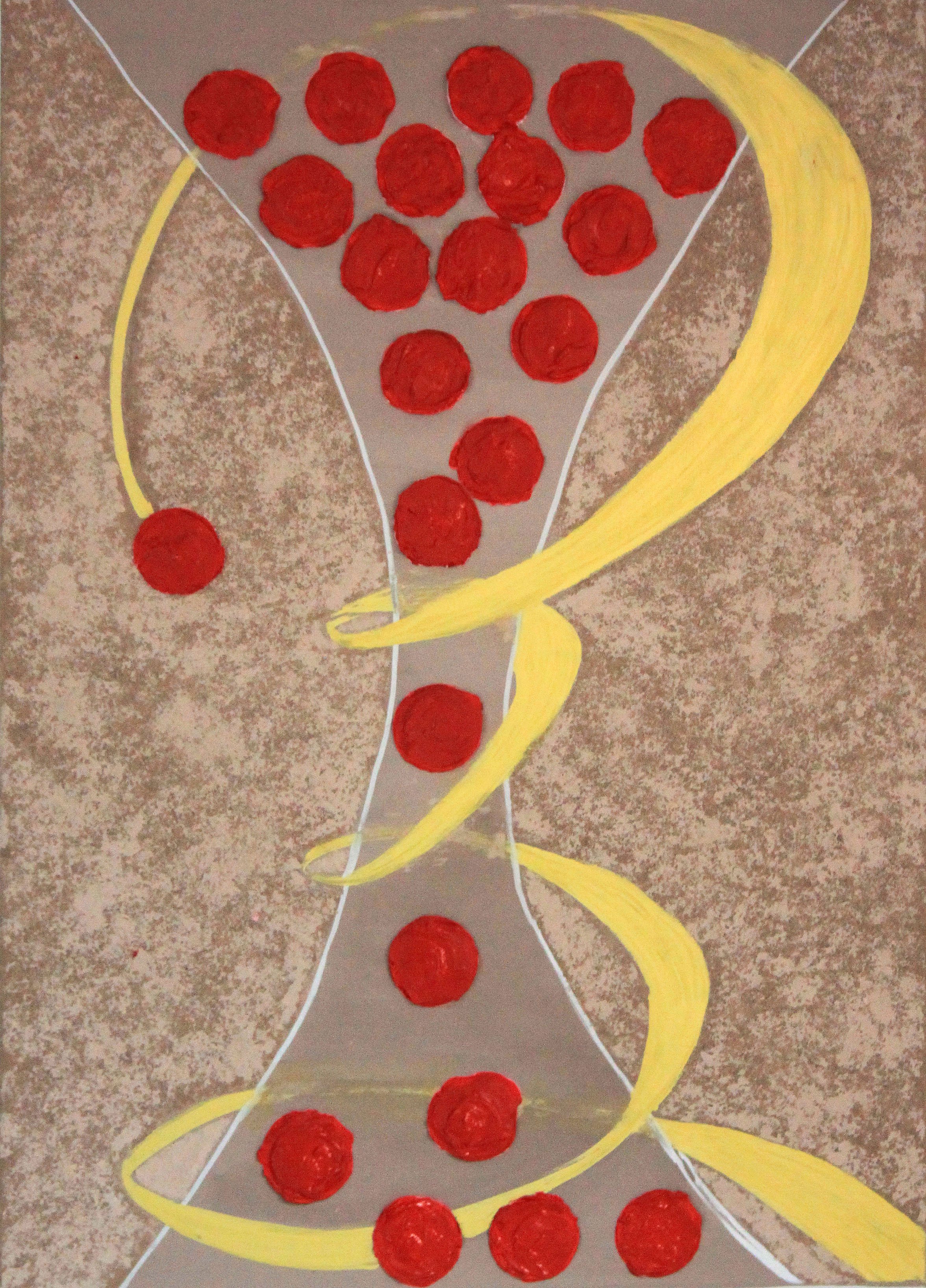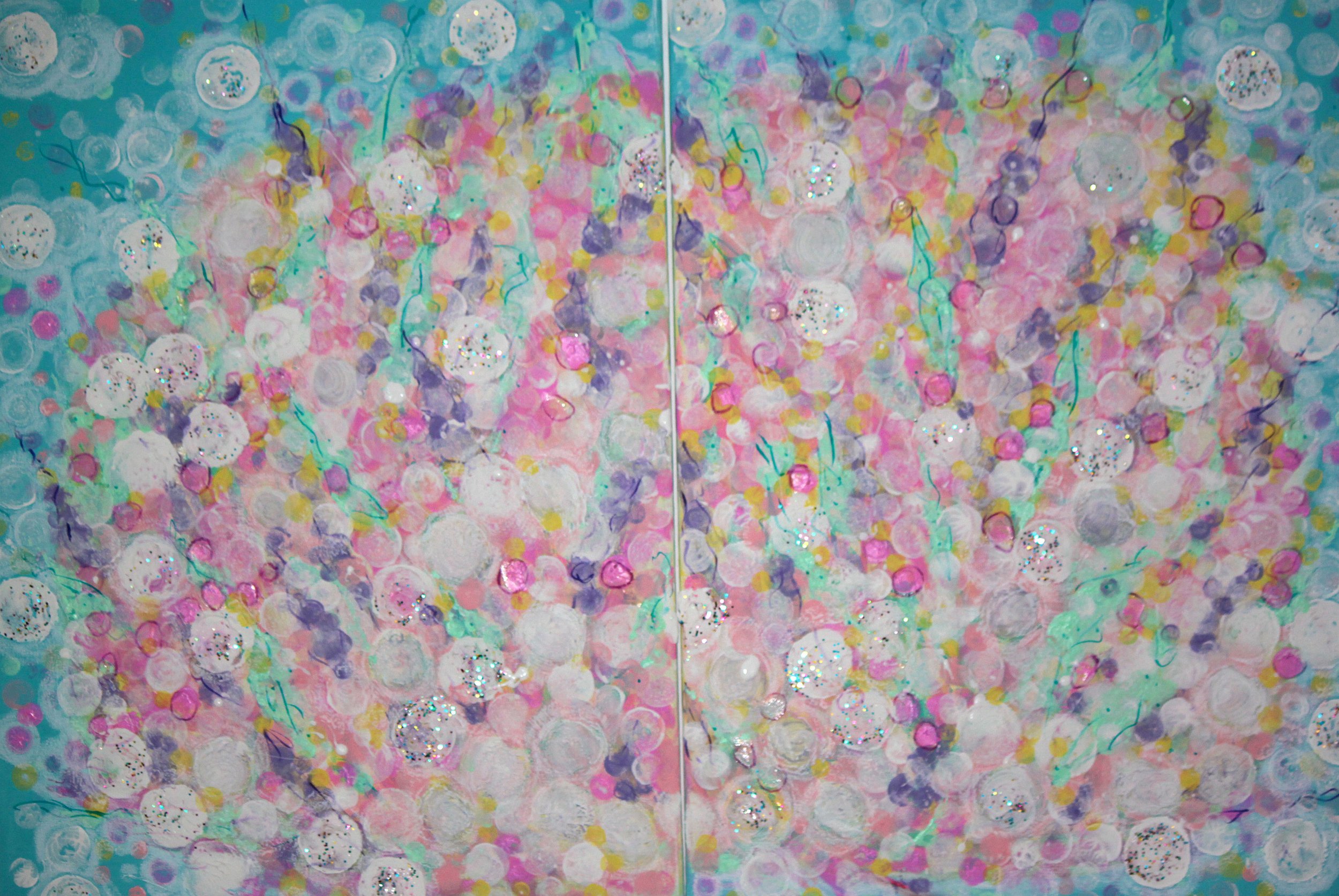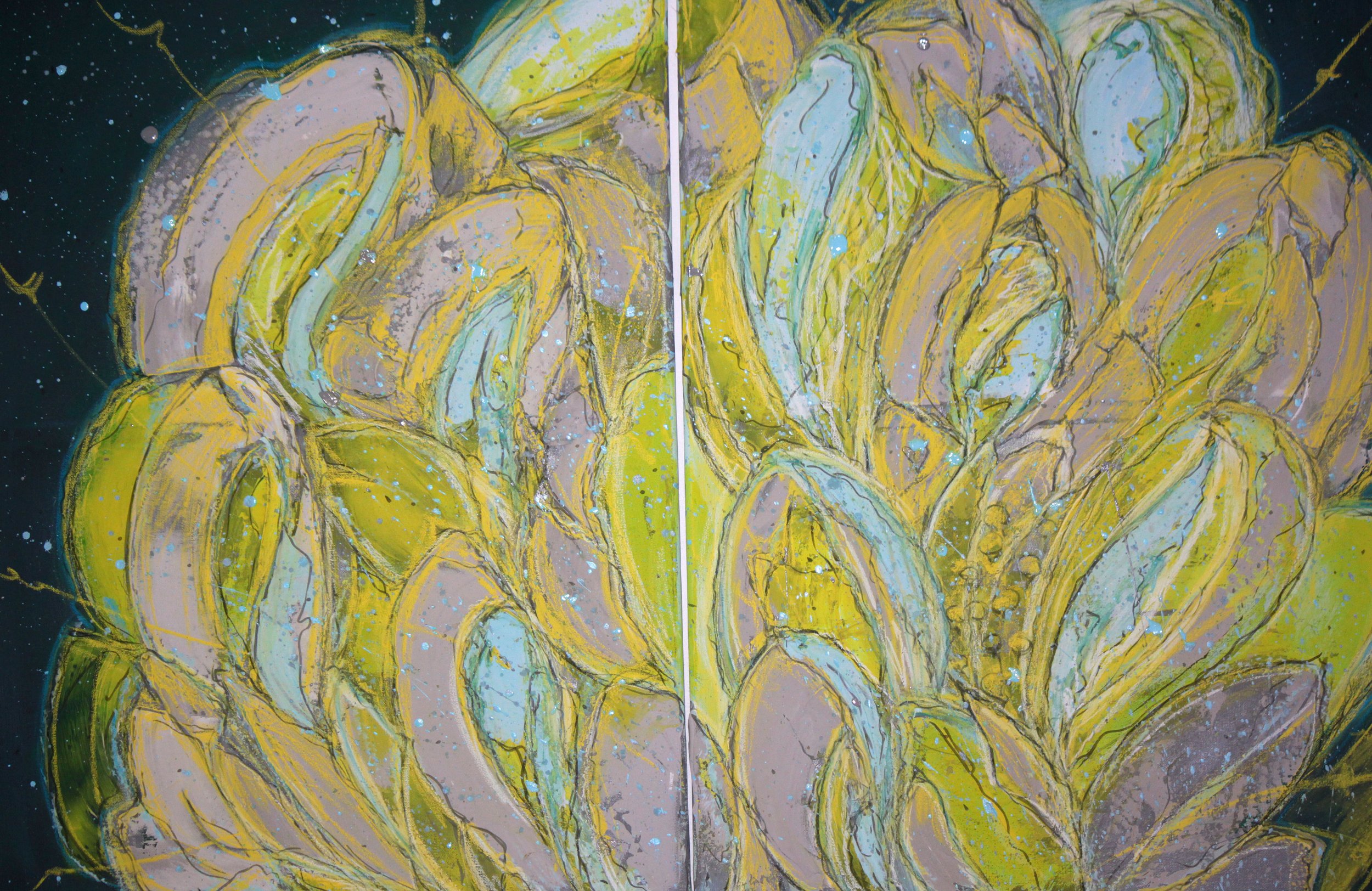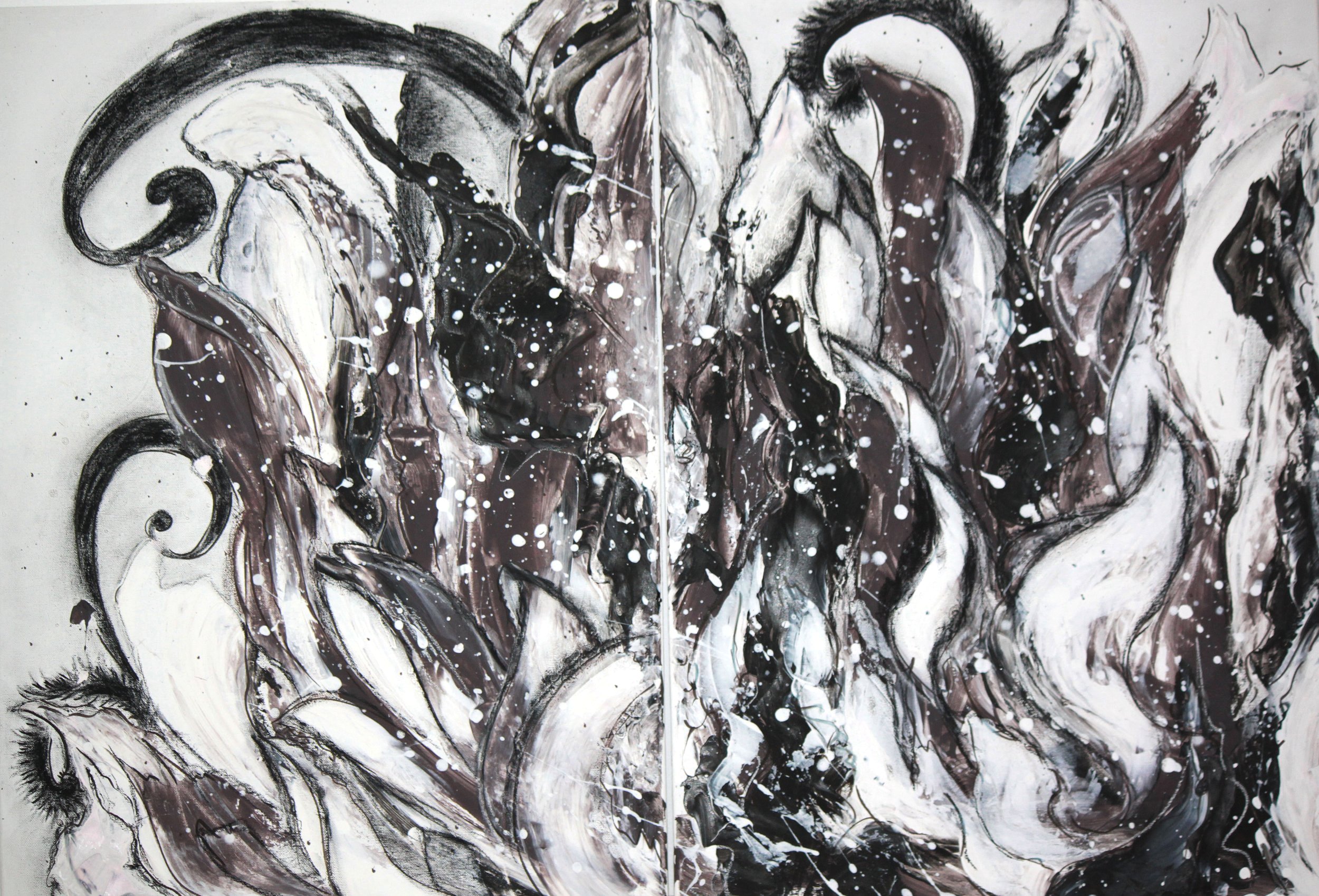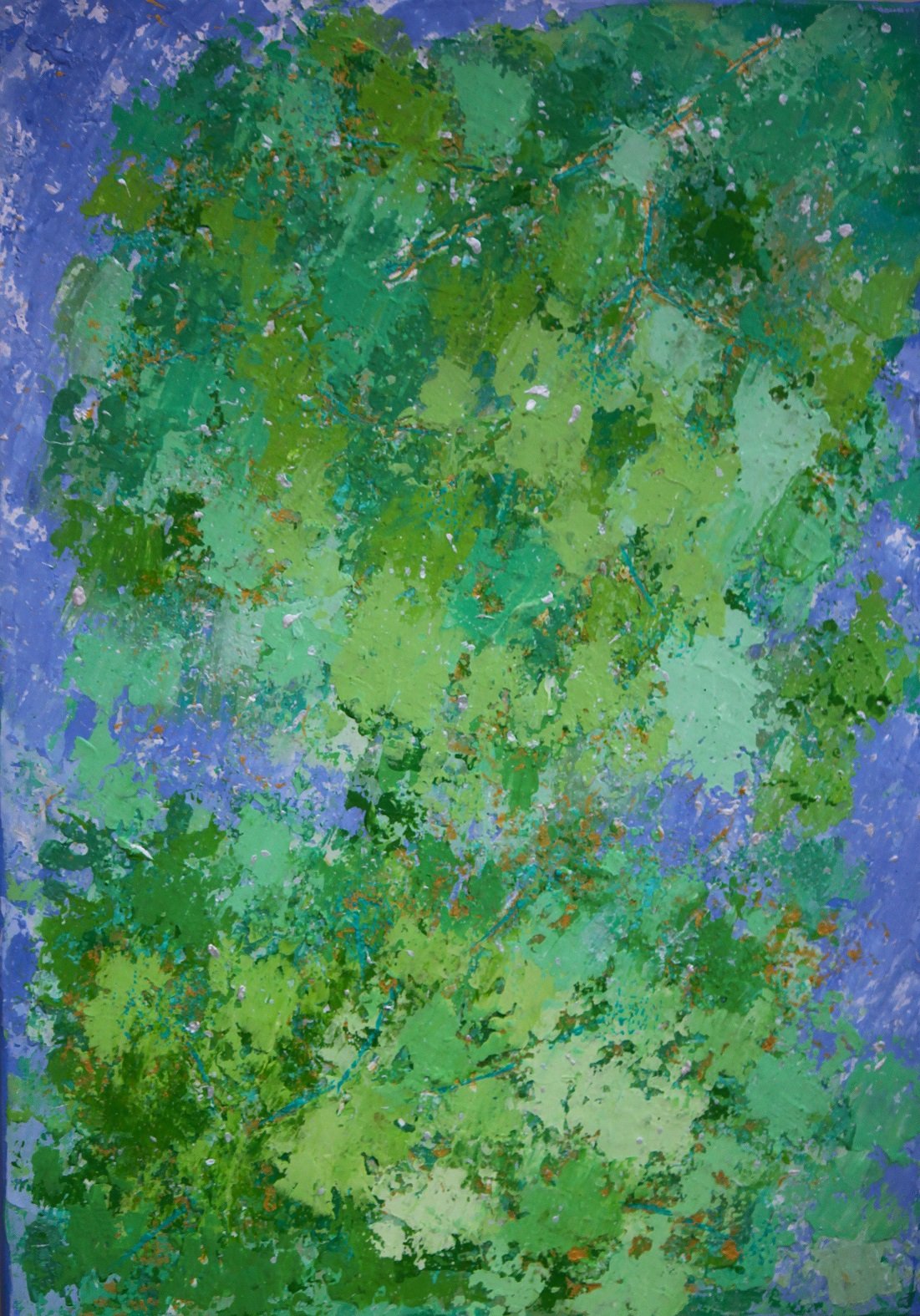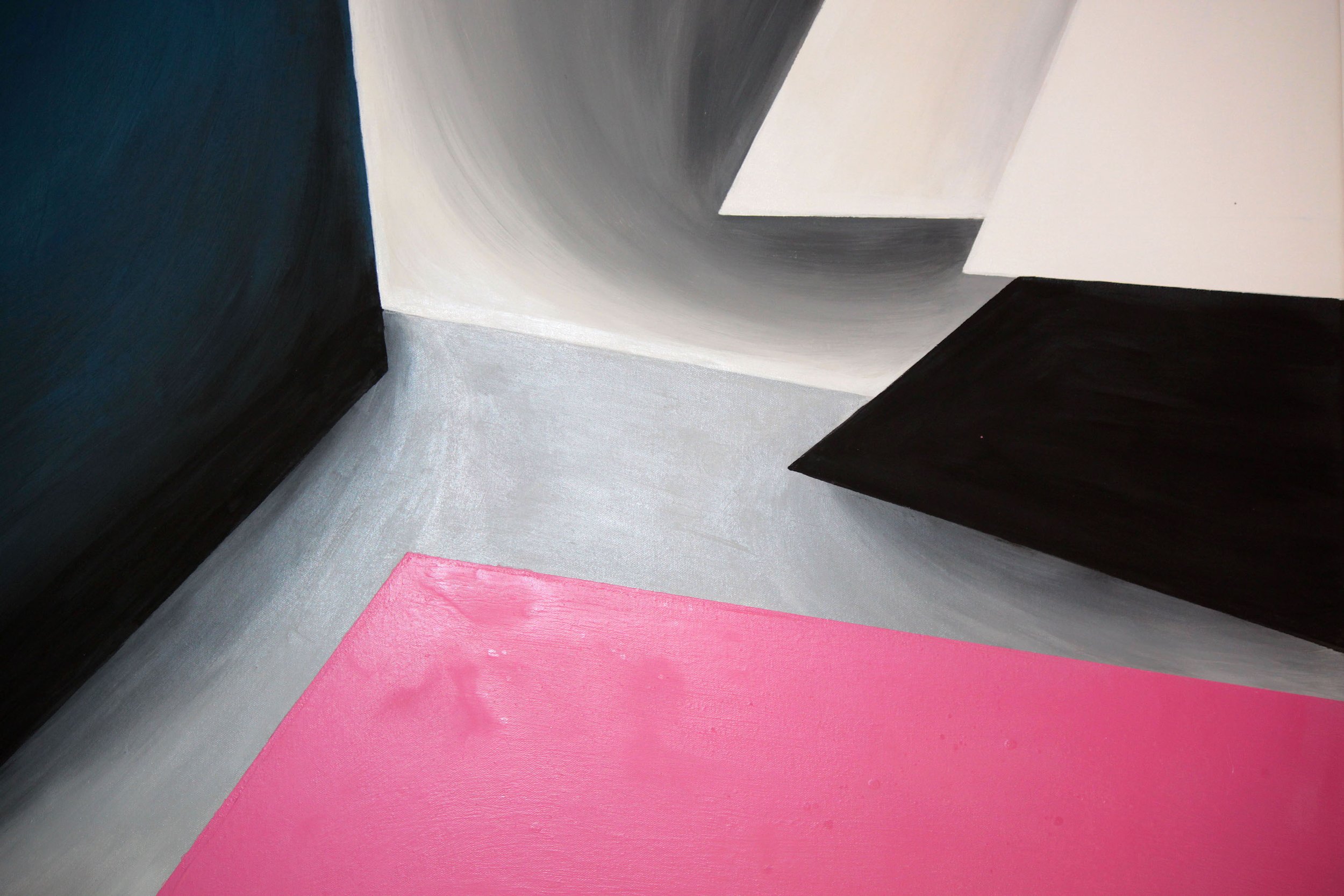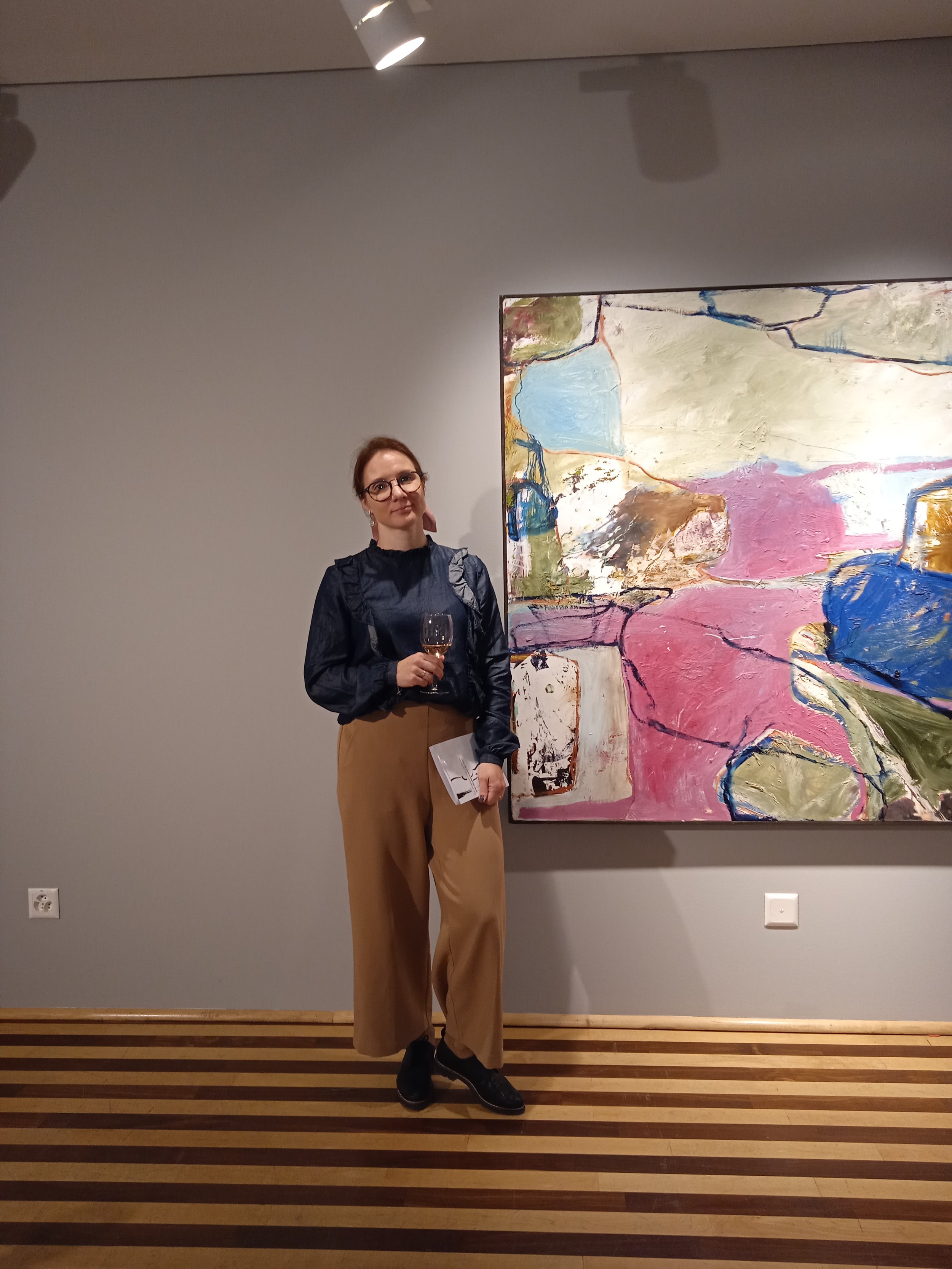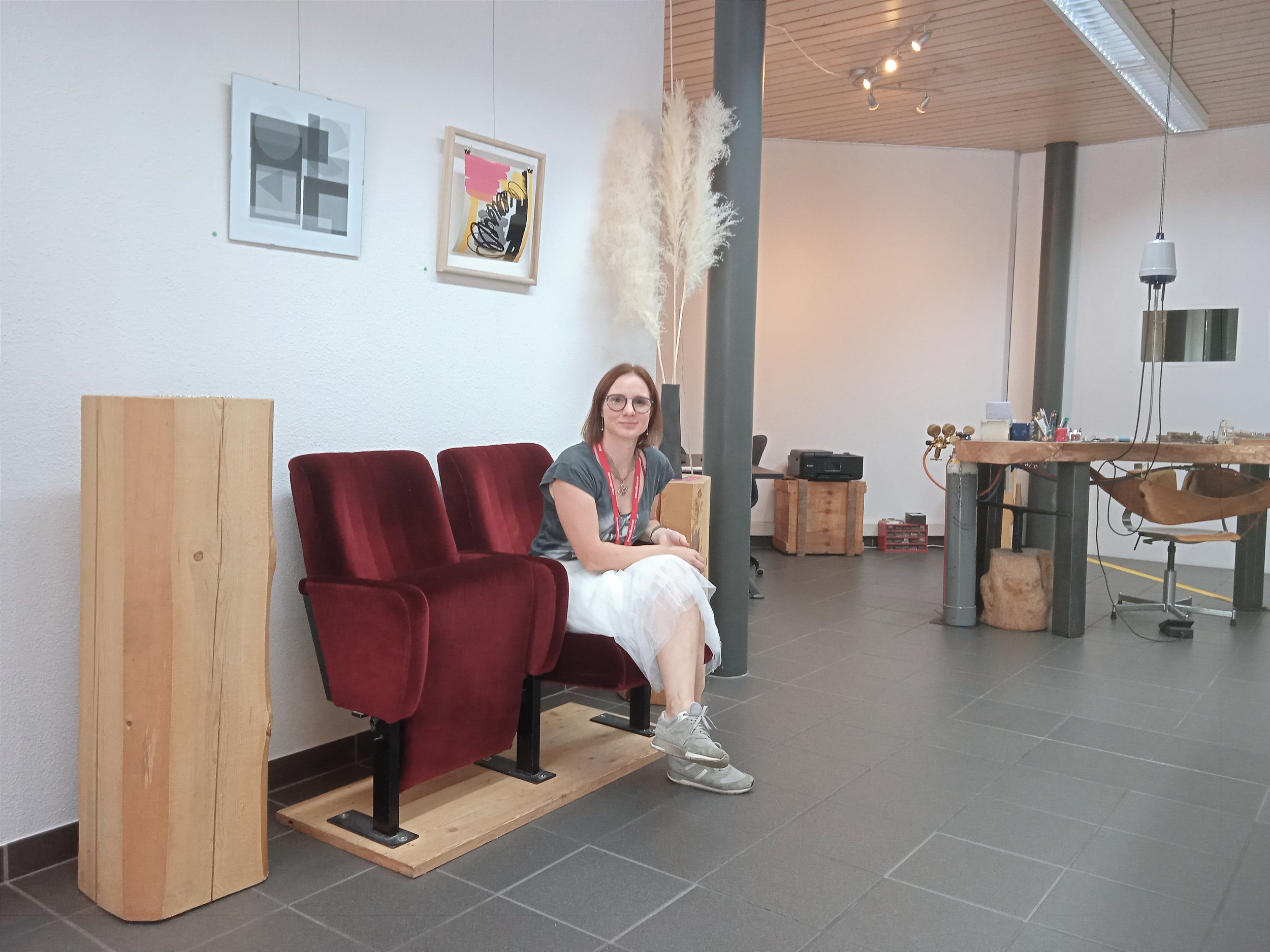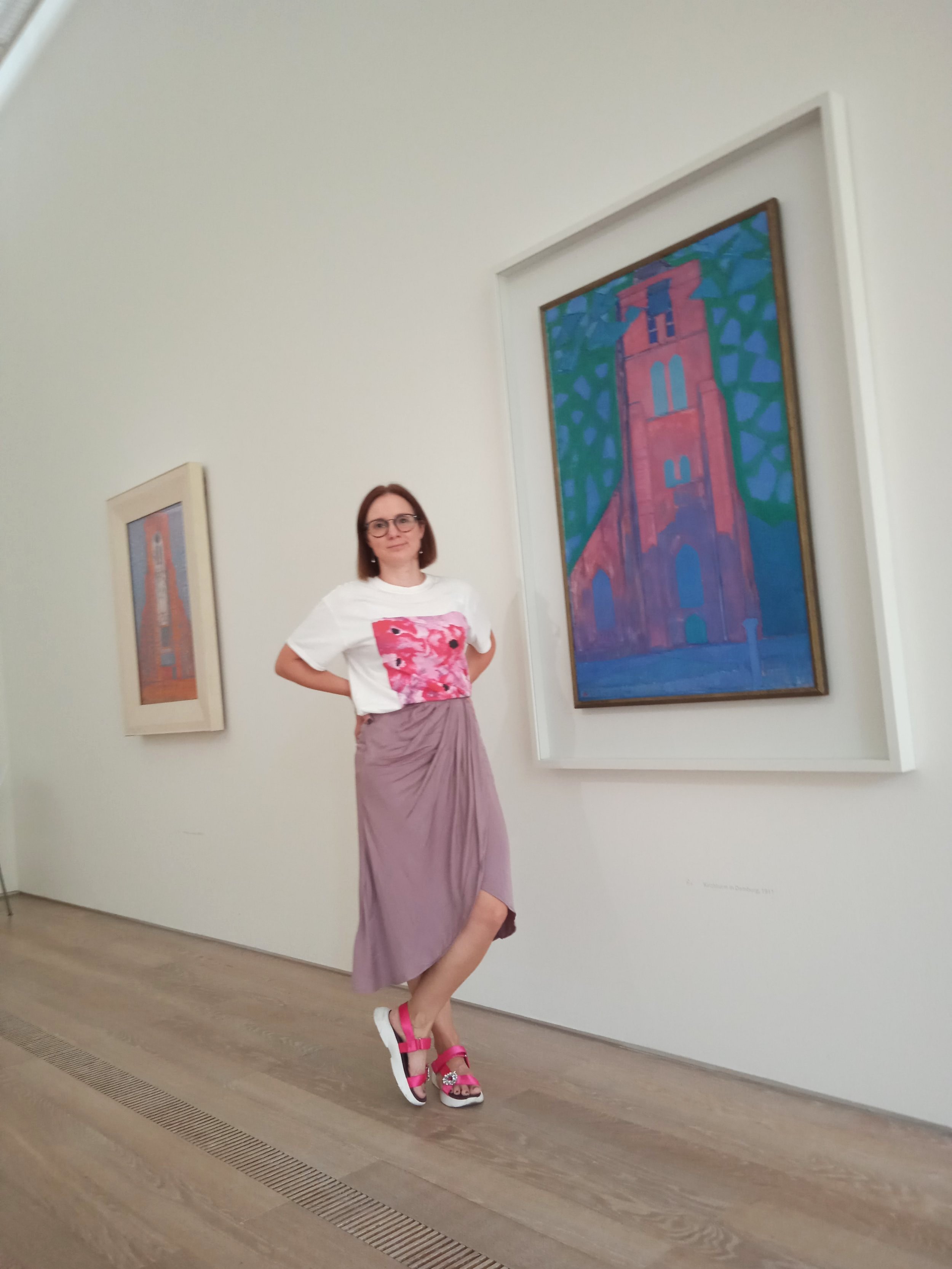Interview
Ksenia Redina
Ksenia Redina was born in Vyatka (now the Kirov region), Russia. This region is known for its colorful handmade clay toys from Dymkovo village, the Dymkovskaya toys.
Ksenia studied studio art at the School of the Art, Russia, and studio Illusion at Tenerife, Canary Islands, Spain.
Now Ksenia lives in the Swiss Alps and is engaged in researching the essence of objects, phenomena, conditions in her work, applying an innovative approach, using new techniques in painting and mixing them with modern materials and classical plots or drawing style, one with the other or all together. We will talk about the path and research of Ksenia in the world of art.
What is your background and how did you start your journey in the art world?
“My mother, a piano teacher and also a creative, noticed my ability to draw when I was quite young. She took me to an art school at the age of 6. I was especially good at graphics at school, and by the time I was 11, I’d already received an elementary art education.
I also studied piano at music school. My parents and I went to the ballet, the theater, and to exhibitions. Psychology has proven that children’s emotions are carried into youth and adulthood, and I credit my parents’ influence to shaping who I am today.
In my youth, I was fond of photography, photographing everything around me, studying the properties of the camera and my attention. When I was a little older, I attended courses in photography and photo processing, and participated in photo contests.
Lately, I’ve become interested in graphic design. I’ve attended a lot of courses in various fields, such as web design, basics of graphic design, Photoshop, Illustrator, InDesign, and even web development.
One constant in my life has been my perpetual interest in exhibitions, concerts, and film premieres — wherever I was and whatever I did. It’s a way to relax, learn something new, and broaden my perspective.”
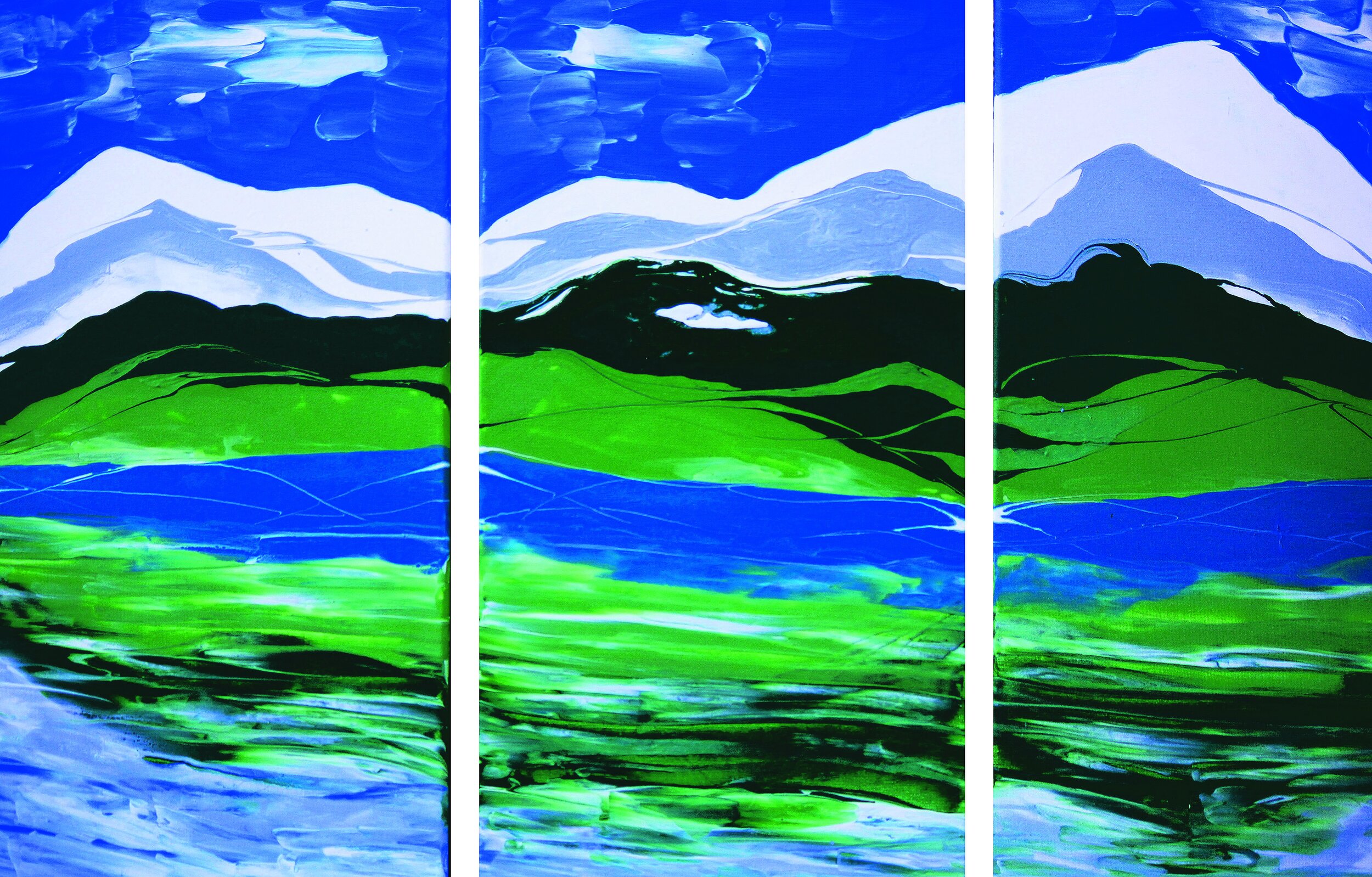

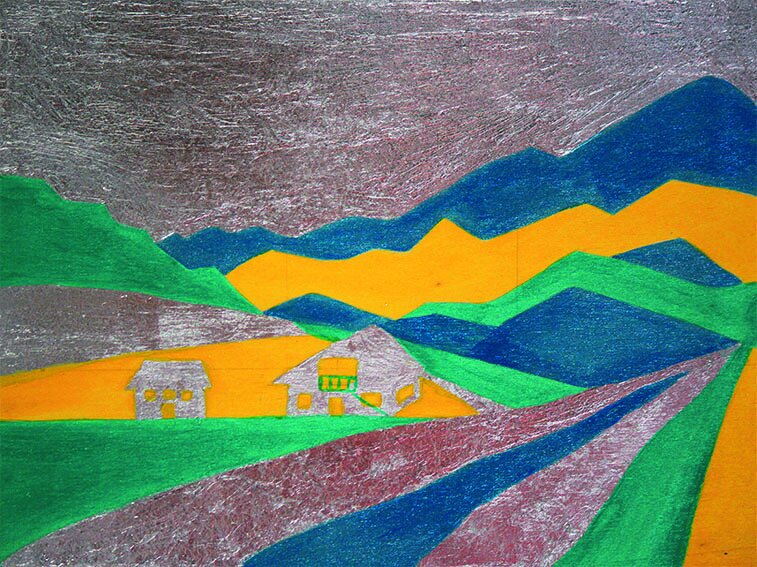
What inspires you most?
“The nature of Switzerland inspired me to create paintings. And still continues to inspire, giving the basis for various subjects, namely the seasons, bright landscapes, the play of shadows, and diffusio. I am also very inspired by traveling, which gives me new emotions. Learning about the culture of another country, traditions and customs, lifestyle, and history changes the view of the world and familiar things. New experiences give food for the mind and creativity. Cultural events have always been a way for me to relax and learn something new. Exhibitions of photography, contemporary art or old masters, new films, or going to a museum are a source of inspiration for me. Outdoor recreation, leisurely contemplation of natural beauties, colors, landscapes, their power, and phenomena inspire and excite the imagination. For example, after a trip to Venice for the Biennale 2022, the idea arose to create a series of works of fabulous flowers. The idea was realized in three diptychs and was called the Wonderful Garden of Fairy Flowers.
Similarly, communication with people from the world of art is a source of priceless inspiration. Whether it’s at my own exhibition or at an art event, or in communication with organizers of an exhibition or festival.
One gallery I visited during the Zurich Art Week still sends me invitations by mail to their events, and I enjoy visiting them. In addition to the exposition and an aperitif, I attended a poetic and musical evening and visited the artist’s studio. I got to see how he works, and it was amazing. Some of the works were being prepared for exhibitions or sales. There were his work clothes, his artistic materials, and his thoughts on paper.”
What themes do you pursue? Is there an underlying message in your work?
“External factors certainly influence creativity. An artist can’t remain aloof from what is happening in the world, especially if you have personal experience. On one hand, I tend to draw what surrounds me: mountains, flowers, sun glare or light, reflections, and shadows. On the other hand, I express emotions about what is happening in the world, or what I have been personally affected by such as emigration, COVID-19, war, time, and life.
In my artworks, I try to understand the essence of objects, phenomena, states, and emotions. It has always been characteristic of me to understand the mechanism and principle of action; why something happens this way and not any other way. Perhaps my parents’ library of popular science literature prompted me to such thoughts. What I read corresponded with reality, and I tried to find answers to the topics raised in the book in the real world, noticing much more, thanks to innate attentiveness.
By taking photographs, I want to capture interesting moments of life, people, and phenomena — to show the beauty of nature and people. My colleagues asked me not take their pictures until they had posed, but I told them they were beautiful in their natural state. I’ve never liked staged photos. Random photos always come out better.
In the field of graphic design, I did not limit myself to creating only a beautiful picture on the screen. I needed the buttons to be pressed so that I could somehow interact with the image.”
“Artists are the mirror of the world. And so it will always be.”
How would you describe your work?
“My work is interesting, original, and ideological. Other people say that my work has a lot of air and is not stressful. It has also been said that my rich inner world is visible in my paintings. My paintings are me and my soul.
One of my paintings, Galaxy, from the Time and Life series, has been compared to Piet Mondrian’s later works. The art critic said: ‘Such iconography sets the stage for the importance of another key element in the artist’s artwork: the rigor and simplicity of geometry in art. A painter such as Piet Mondrian, for example, had exceedingly approached this theme through the square; while Kseniya, in her innovative and abstract vision, depicts two triangles (which become pyramidal solids) with its three perfect sides (an extremely crucial number on a symbolic level) and a circle of the life, interposed between the aforementioned forms.’
My 2 paintings, Five corners and Rectangles from The game of shadows series have also been compared to the works of Kazemir Malevich: ‘Remembering the artist Kazimir Malevič, Kseniya emphasizes the importance of geometry in art, giving her canvases a pure and innovative sensitivity and drawing inspiration from the emotional and mental sphere of the human being. These figures, also typical of Geometric Abstractionism, are completely free from any traditional element of painting: in this way the artist explores and investigates the essence of their ‘plastic nature’, seeking the true origin of art, that is its soul, which leads it to be a pure representation of itself. The use of tonal contrasts is linked to all of this: colors such as pink or orange tending to red are combined with even colder shades such as black and grey, further outlining the two geometric compositions. Furthermore, Kseniya emphasizes the juxtaposition of horizontal and diagonal lines, as if the various elements could expand until they come out of the canvases. By making everything almost three-dimensional, framing and homogenizing the overall view, the artist allows the viewer to be pervaded by these works, from which a balanced, intense and contemplative effect emerges. Kseniya Redina's research analyzes the symbolic meaning of shape and color, as well as the concept of essentiality.’”
Which artists influence you most?
“It’s hard to say which artist has influenced me the most. I like the old masters for their flawless and impeccable work, as well as their accurate execution of reality. I love the impressionists and expressionists for their courage, and contemporary artists for innovation. I don’t imitate anyone. I’m going my own way.
I’m close to artists such as Malevich, Kandinsky, Picasso, and Chagall. Art critics compare me with the first two artists, and that’s probably not accidental. It’s because of the works of these two artists that I plan to start acquiring from auctions for my collection.”
What is your creative process like?
“I can confidently say that I’m an experimental artist. At the very beginning of my creative journey, I made sketches to better understand the color of the painting I wished to create. But soon, I learned to work without sketches. Everything happens in my head. I see the finished picture as a whole and individual details in color, which I then put on canvas. I like to leave room for impromptu thoughts and emotions. This gives the painting life and movement.
A sketch is made or the canvas is immediately closed with one color, depending on what color the background should have in the final picture. To see the work of color, I paint the picture layer by layer with the selected color, and where it is needed. I rarely repaint. More often, I supplement the picture with shades.
I experiment not only with styles but also with artistic materials. In one series of works, almost all the materials I had were used: dry and oil pastels, acrylic, markers, putty, glitter, various brushes, sponges, a palette knife. Some series of artworks are made without brushes, like one of alpine landscapes made in the style of liquid acrylic. Sometimes there are no paints at all in the work, only putty and potal.”
What is an artist’s role in society and how do you see that evolving?
“In technology, I’m an experimental artist. And in philosophy, or in fact, I’m more of an artist researcher. It’s interesting for me to notice natural and physical phenomena, reflections, refractions of light, shadows, spots, the essence of objects and things, time, life, and eternity. Like society itself, and the whole world in which we live.
The role of an artist in society is to reflect people’s lives — their problems and needs, as well as their joys and concerns. In other words, everything that society lives through, but seen from a different angle so that it makes you smile or think, attract attention, and evoke emotion, either positive or negative.”
Have you had any noteworthy exhibitions you'd like to share?
“I work a lot; almost nonstop. I have a lot of ideas. Therefore, I always have something to show in a gallery, at an exhibition, at a fair, or to send to a competition. Every month, my work is shown somewhere in one or two places. You can find the link to the International Exhibition in Zurich here, and the link to the International Art Faire in Forli, Italy here.
Perhaps I would single out physical exhibitions from competitions or virtual exhibitions, mainly because they have visual contact. Yes, emotions are also present when holding a virtual exhibition or participating in a competition, but this is due to the anticipation of upcoming events and the expectation of how everything will go. In physical exhibitions, visual contact with everyone’s work, combined with the opportunity to connect with artists, curators, collectors, and galleries creates a special atmosphere.
Recently, I got into sculpture and I’m working on a series of concrete sculptures. I want to show new possibilities and properties of this material. It seems to me that concrete can still surprise the world. I’m also working on a series of conceptual photography, and some sketches of digital work.
I’m a regular participant in auctions as a seller, and for the foreseeable future as a collector. I also have thoughts about a project around the accessibility of contemporary art. I’ve become a member of the union of artists in our region in Switzerland, and I have a lot of questions and suggestions for the artist community. Let's see what I can do for the benefit of art. People have an interest in art, and this is the main point.”
Instagram: @kseniya.redina
Other: Twitter


